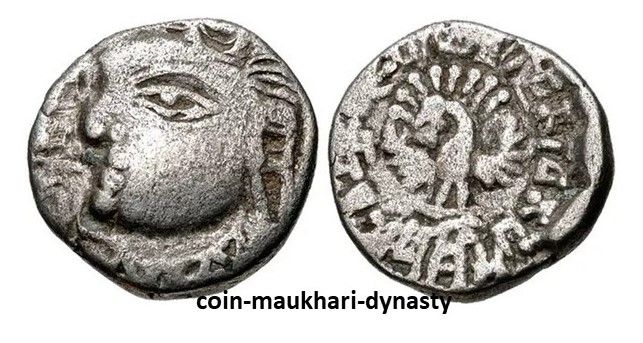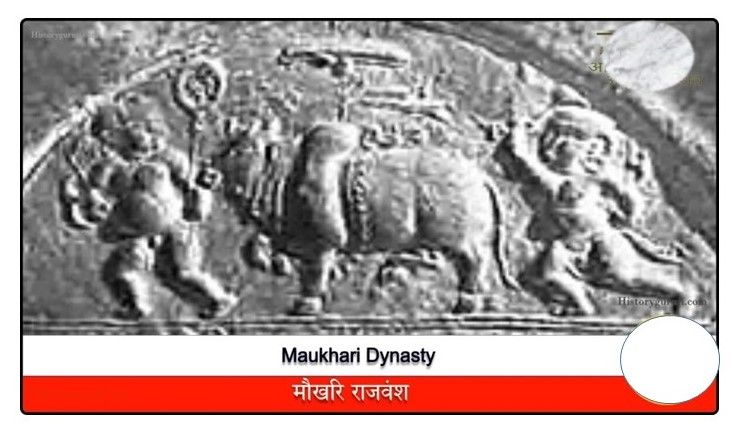The Maukhari Empire holds a distinctive place in the early medieval history of India as a powerful polity that emerged from the disintegration of the Gupta Empire. Flourishing during the sixth century A.D., the Maukharis were not only one of the ancient tribes of northern India but also played a critical role in shaping the political landscape of the region in a transitional period marked by the decline of Gupta dominance. This essay explores the origins, rise, expansion, rulers, and eventual decline of the Maukhari Empire, shedding light on its significant contributions to the history and culture of early India.
Origins and Early History
The Maukhari Empire is traditionally believed to have originated from the ruins of the Gupta Empire, which had been the preeminent power of northern India before its precipitous decline in the mid-sixth century A.D. The Maukharis were originally inhabitants of the Anga region, corresponding roughly to southern Bihar. Over time, they migrated westward into present-day Uttar Pradesh, a fertile and strategically important region that provided a strong base for their future conquests and political ascendancy.
Amidst the power vacuum created by the weakening Guptas, the Maukharis rose to prominence, exploiting the political instability of the period. Hari Varman Maukhari is one of the earliest known rulers of this emerging dynasty. Although the precise boundaries of his kingdom remain unclear, inscriptions and historical evidence indicate that he assumed the imperial title of Maharaja, signalling his elevated status and ambitions. The Maukhari kingdom under him reportedly stretched into regions as far south as Andhra Pradesh, Orissa, and Gauda (part of Bengal), demonstrating considerable territorial reach for this period.
Ishanavarman: The First Prominent Ruler
Ishanavarman is widely regarded as the first significant ruler of the Maukhari Empire and the architect of its early expansions and consolidation. He succeeded in expanding the kingdom and solidifying its power by undertaking military campaigns against neighboring rulers. Notably, Ishanavarman is credited with defeating an Andhra king, who was likely a member of the Vishnukundin family, a significant dynasty of South India.
Despite his successes, Ishanavarman faced staunch opposition, particularly from the Later Guptas. These successors to the Gupta Empire engaged the Maukharis in multiple conflicts, managing to deliver substantial defeats to Ishanavarman’s forces. Nonetheless, inscriptions associated with later rulers such as the famous Harsha Inscription document that Ishanavarman also triumphed over other adversaries, such as the Sulikas—a mountain tribe known for their frequent raids.
Archaeological discoveries like the renowned clay seals and coins linked to Ishanavarman portrayed him as more than just a warrior king. These artifacts suggest he was a learned and just ruler who actively patronized education, culture, and administration—qualities that helped stabilize his kingdom and enhance its prestige in the region.
Sarvavarman and the Consolidation of Power
Sarvavarman, who ruled approximately from 560 to 585 A.D., was most likely the son and successor of Ishanavarman. He continued the policies of maintaining control over the heartland of Magadha and successfully kept the Later Guptas subordinate, ensuring the dominance of the Maukharis in northern and central India. The presence of a Maukhari outpost at Asirgadh in the Nimar district of Madhya Pradesh further suggests that the empire extended its influence into the Deccan plateau, signifying a strategic attempt to control trade routes and frontier regions.

Inscriptions, such as the seal from Nalanda University, attest that Sarvavarman was succeeded by his son, Maharajadhiraja Avanti Varman, who ruled circa 585 to 600 A.D. Under Avanti Varman, the Maukhari Empire reached its zenith. He transferred the capital to Kannauj, a city of immense historical and strategic importance situated on the fertile Gangetic plain. This move not only enhanced administrative efficiency but also positioned Kannauj as a vital cultural and political hub of northern India.
Height of the Empire and Alliances
Avanti Varman’s reign marked the peak of Maukhari power, with the empire exerting significant influence over a vast geographic area. His son and successor, Grahavarman, further consolidated the dynasty’s stature through matrimonial alliances, marrying Rajyasri, the daughter of Prabhakar Vardhana of the Pushabhukti dynasty based in Thanesar. Such alliances were central to the politics of the period, designed to cement relationships between powerful houses.
However, the dynasty’s fortunes began to wane rapidly after Grahavarman’s demise. He was killed by Deva Gupta of the Later Gupta dynasty, marking the beginning of a series of military setbacks for the Maukharis. This period also witnessed increasing fragmentation of power in northern India, with invasions and internal conflicts disrupting the stability of major kingdoms.
Decline and Legacy
The later years of the Maukhari Empire were characterized by chaos and disarray as northern India faced incursions from multiple directions during the reign of Jayganga. These invasions undermined Maukhari authority, reducing the once powerful empire to a relatively insignificant local dynasty.
By the turn of the seventh century, the Maukhari family faded into obscurity, overshadowed by the rise of other regional powers such as the Pushyabhutis under Harsha. Despite their decline, the Maukharis' contributions to the administration, culture, and political architecture of early medieval northern India left an enduring imprint.
Conclusion
In summary, the Maukhari Empire emerged as a dynamic and influential power during the turbulent transition following the fall of the Gupta Empire. Originating from the Anga region and migrating westward, the Maukharis seized the opportunities presented by the weakening Guptas to carve out an empire that, at its height, controlled vast territories encompassing much of northern and parts of eastern and southern India. Under rulers such as Ishanavarman, Sarvavarman, and Avanti Varman, the empire balanced military prowess with cultural patronage and administrative sophistication.
Although the Maukhari Empire eventually succumbed to internal strife and external invasions, its historical significance remains noteworthy for its role in preserving the continuity of Indian civilization during a period of political fragmentation and for laying the foundations for subsequent powers that defined early medieval Indian history.
